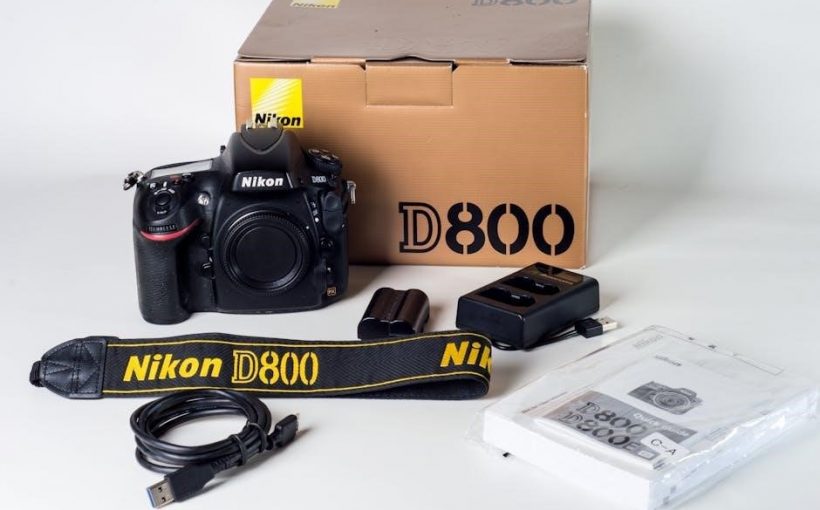The Tasco Trail Camera is an affordable, reliable option for outdoor enthusiasts, offering PIR motion detection, high-quality images, and weatherproof durability. This manual guides setup, operation, and troubleshooting for optimal performance.
1.1 Overview of the Tasco Trail Camera
The Tasco Trail Camera is a weatherproof, rugged device designed for outdoor wildlife monitoring. It features PIR motion detection, capturing high-quality still images or video clips. With user-friendly controls, it’s ideal for hunters and nature enthusiasts. The camera’s durable design withstands harsh environments, ensuring reliable performance. This manual provides detailed guidance for setup, operation, and troubleshooting, helping users maximize its capabilities for wildlife observation and surveillance.
1.2 Key Features and Benefits
The Tasco Trail Camera offers PIR motion detection for capturing wildlife activity, high-quality image and video recording, and weatherproof durability for outdoor use. Its user-friendly interface simplifies setup and operation, while the rugged design ensures reliability in harsh environments. Key benefits include efficient motion sensing, clear image capture, and long-lasting performance. These features make it an excellent choice for hunters, wildlife enthusiasts, and outdoor surveillance, providing valuable insights into animal behavior and activity patterns.

Unboxing and Inventory
Upon opening, ensure the package includes the Tasco Trail Camera, mounting hardware, and user manual. Verify all components are present and undamaged before proceeding.
2.1 What’s Included in the Package
The Tasco Trail Camera package typically includes the camera unit, a user manual, mounting hardware, and a strap for easy installation. Some models may also include an SD card adapter or additional accessories. The manual provides detailed instructions for setup, operation, and troubleshooting. Ensure all components are present and undamaged upon unboxing. The camera is designed for outdoor use, with features like motion detection and weatherproofing, making it a reliable choice for wildlife monitoring.
2.2 Initial Inspection and Checklist
Upon unboxing, inspect the Tasco Trail Camera for any visible damage. Verify the package includes the camera, mounting hardware, and user manual. Check for a memory card slot and ensure the battery compartment is accessible. Format the memory card before use and install batteries as per the manual. Review the camera’s exterior for proper function of buttons and sensors. Ensure the lens is clean and free of obstructions. This initial checklist ensures the camera is ready for setup and outdoor use. Proper inspection prevents issues during operation.

System Requirements and Compatibility
The Tasco Trail Camera supports memory cards up to 32GB and requires 4-8 AA batteries for optimal performance. Ensure compatibility by formatting memory cards and using recommended batteries.
3.1 Supported Memory Cards and Capacity
The Tasco Trail Camera supports memory cards up to 32GB, ensuring ample storage for images and videos. It is compatible with SD and SDHC cards, formatted in FAT32. For optimal performance, use a high-quality memory card with a capacity of 8GB to 32GB. Formatting the card in the camera before use is recommended to prevent errors and ensure compatibility. Always choose a memory card that meets the camera’s specifications to avoid data loss or recording issues.
3.2 Battery Requirements and Recommendations
The Tasco Trail Camera requires 4-8 AA batteries for operation, with alkaline or lithium batteries recommended for reliable performance. Battery life can last up to 6 months under normal usage. For extended use, consider using a rechargeable battery pack or external power sources like a solar panel. Always use high-quality batteries to ensure optimal performance and avoid mixing old and new batteries to prevent power drain. Regularly check battery levels to maintain consistent camera functionality in the field.
Mounting and Positioning
The Tasco Trail Camera is easy to install using the included strap or mounting bracket. Choose a concealed location with a clear line of sight for optimal motion detection.
4.1 Choosing the Best Location for the Camera
Selecting the right location is crucial for optimal performance. Position the camera near wildlife trails or game paths to maximize motion detection. Ensure a clear line of sight and avoid obstructions like branches or tall grass. Mount the camera at a height of 2-3 feet to avoid false triggers and ensure it blends into the surroundings. Consider the camera’s field of view and angle to cover the desired area effectively. Avoid direct sunlight to prevent overexposure and ensure the lens remains clear for high-quality images.
4.2 Mounting Options and Accessories
The Tasco Trail Camera offers versatile mounting options to suit various environments. Use the included tree mount or strap to secure the camera to a tree or post. For added stability, consider a tripod or adjustable mounting bracket. Additional accessories like locking mechanisms can enhance security. Ensure the camera is level and firmly attached to prevent movement or damage. The user manual provides guidance on using these accessories effectively to maximize camera performance and durability in the field.
Setting Up the Camera
Setting up the Tasco Trail Camera involves activating it, navigating the menu, and configuring time, date, and basic parameters for optimal performance. Follow the manual for guidance.
5.1 Activating the Camera for the First Time
To activate the Tasco Trail Camera, insert the batteries and a formatted memory card. Power on the device and navigate to the setup menu. Set the date, time, and basic parameters as instructed in the manual. Ensure all settings are configured correctly for optimal performance. Refer to the user manual for detailed steps to complete the initial activation process successfully.
5.2 Navigating the Menu System
The Tasco Trail Camera features a user-friendly menu system designed for easy navigation. Use the arrow keys to scroll through options like motion detection, image quality, and time settings. The menu is organized into clear categories, making it simple to adjust settings. Refer to the user manual for detailed guidance on accessing and configuring each feature. The intuitive interface ensures quick setup and customization to meet your specific needs for capturing wildlife activity effectively.
5.3 Setting Time, Date, and Basic Parameters
Setting the correct time, date, and basic parameters is essential for proper camera operation. Use the menu system to navigate to the setup mode and select the time and date options. Ensure the format matches your preferences (MM/DD/YYYY). Refer to the user manual for step-by-step guidance, including Figure 6 for time and date setup. Accurate settings are crucial for motion detection and data organization. Adjust other basic parameters as needed to customize the camera’s functionality according to your requirements.
Camera Operation Modes
The Tasco Trail Camera offers versatile operation modes, including still image capture, video recording, and motion detection. It delivers high-quality images and video clips with weatherproof durability.
6.1 Understanding Motion Detection and PIR Settings
The Tasco Trail Camera features a highly sensitive Passive Infra-Red (PIR) motion sensor, detecting movement and triggering image or video capture. The PIR sensor is designed to monitor wildlife activity, ensuring high-quality results. Users can adjust sensitivity levels to customize detection range, minimizing false triggers. This feature is ideal for capturing wildlife without human interference. Properly configuring PIR settings ensures optimal performance in various environments, making it a key tool for outdoor surveillance and wildlife monitoring.
6.2 Configuring Still Image vs. Video Recording
The Tasco Trail Camera allows users to choose between capturing still images or video recordings. For still images, the camera can take high-quality photos up to 6MP, ideal for detailed wildlife shots. Video recording mode captures dynamic wildlife activity, providing a broader view of animal behavior. Users can easily switch between modes via the menu system, ensuring flexibility for different surveillance needs. This feature enhances the camera’s versatility for outdoor monitoring and wildlife observation.
6.3 Adjusting Sensitivity and Detection Range
The Tasco Trail Camera allows users to adjust the sensitivity of the PIR motion sensor and detection range for optimal performance. Higher sensitivity settings detect smaller or faster-moving objects, while lower settings reduce false triggers. The detection range can be customized to focus on specific areas, ensuring accurate motion detection. These adjustments, accessible via the menu system, help tailor the camera’s response to the environment, improving efficiency and reducing unnecessary captures. Proper calibration ensures reliable operation in various outdoor conditions.

Customizing Camera Settings
Customize your Tasco Trail Camera by adjusting interval settings, image quality, and enabling or disabling LED lights to suit your specific needs and preferences for optimal performance.
7.1 Setting Up the Interval (Detection Delay)
Setting the interval, or detection delay, on your Tasco Trail Camera allows you to customize how often the camera captures images or videos after motion is detected. Access the menu system and navigate to the interval setting option. Choose your preferred delay time, typically ranging from seconds to minutes, depending on your surveillance needs. Once selected, save the settings to ensure the camera operates according to your specified interval. This feature helps conserve memory and battery life while optimizing capture frequency.
7.2 Adjusting Image Quality and Resolution
Adjusting the image quality and resolution on your Tasco Trail Camera ensures optimal capture of wildlife activity. Access the menu system and navigate to the image settings. Select from available resolutions, such as 2MP, 4MP, or higher, depending on your model. Higher resolutions provide more detailed images but consume more memory. Adjust compression settings to balance quality and storage efficiency. Choose the best option for your needs to capture crisp, clear images while managing memory capacity effectively.
7.3 Enabling or Disabling LED Lights
The Tasco Trail Camera features LED lights for low-light operation. To enable or disable them, navigate to the camera’s menu system and select the LED settings. Disabling LEDs can help reduce battery consumption or avoid detection in sensitive environments. Enable LEDs for improved visibility in dark conditions. Adjust these settings based on your specific needs to optimize performance and ensure discreet or effective operation in the field.
Memory and Battery Management
Proper memory and battery management ensures optimal performance. Use compatible memory cards and format them regularly. Monitor battery life and replace or recharge as needed for continuous operation.
8.1 Formatting Memory Cards and Storage Options
Formatting memory cards is essential for optimal performance. Use the camera’s menu to format cards, ensuring compatibility and preventing errors. Regular formatting maintains storage efficiency. For best results, use high-quality memory cards with capacities up to 32GB. Avoid using cards with existing data to prevent corruption. Store cards in a dry, cool place to preserve data integrity. Always format cards in the camera rather than on a computer for proper initialization. This ensures the camera operates smoothly and captures images without issues.
8.2 Managing Battery Life and Power Saving Tips
To maximize battery life, use high-quality, rechargeable batteries and ensure they are fully charged before deployment. Enable power-saving features like low-power mode and adjust settings to reduce unnecessary activations. Regularly check battery levels and replace them when below 20%. Store batteries in a cool, dry place during periods of inactivity. Avoid extreme temperatures, as they can drain battery life. Properly maintaining your batteries ensures continuous camera operation and reliable performance in the field.

Image and Video Quality Optimization
Adjust resolution and compression settings for clearer images and videos. Proper camera positioning and angle ensure optimal capture of wildlife activity and outdoor scenes effectively.
9.1 Understanding Resolution and Compression Settings
Resolution determines image clarity, with higher settings capturing more detail but using more memory. Compression reduces file size but may lower quality. Adjust these settings to balance storage and image quality, ensuring optimal performance for your outdoor surveillance needs. The manual provides guidance on selecting the right configuration for your specific requirements, helping you achieve clear and high-quality images or videos efficiently.

9.2 Best Practices for Capturing High-Quality Images
Position the camera at the optimal height and angle to capture clear images. Use the highest resolution setting for detailed photos. Ensure proper lighting by avoiding direct sunlight. Clean the lens regularly to prevent smudges. Test the camera before deployment to ensure it’s functioning correctly. Adjust the PIR sensitivity to minimize false triggers. Use the interval setting wisely to conserve memory and battery life. These practices will help you capture sharp, high-quality images of wildlife effectively.

Troubleshooting Common Issues
Address motion detection problems by resetting the camera and adjusting PIR settings. Fix memory card errors by formatting or replacing the card. Resolve battery drain by checking connections and using recommended batteries.

10.1 Resolving Motion Detection Problems

Motion detection issues can arise due to incorrect sensitivity settings or sensor obstruction. Ensure the PIR sensor is clean and free from debris. Adjust sensitivity levels to match your environment. If the camera fails to trigger, reset it by turning it off and on. Check for firmware updates, as outdated software may cause detection problems. Ensure the camera is positioned correctly, facing the target area. If issues persist, consult the user manual or contact Tasco support for further assistance.
10.2 Fixing Memory Card Errors and Corruptions
If your Tasco Trail Camera displays memory card errors, start by formatting the card using the camera’s menu. Ensure the card is compatible and meets the recommended capacity. If issues persist, check for physical damage or corruption. Try the card in another device to verify functionality. If the problem remains, replace the memory card. Always back up important data before formatting. For detailed steps, refer to the user manual or contact Tasco support for further assistance.
10.3 Addressing Battery Drain and Power Issues
If experiencing battery drain or power issues with your Tasco Trail Camera, ensure batteries are high-quality and installed correctly. Check settings like motion detection sensitivity and LED lights, as these can consume power quickly. Avoid using rechargeable batteries in extreme temperatures. If issues persist, reset the camera by removing batteries for 30 seconds. Regularly clean battery contacts and store spares properly. For severe drain, consult the user manual or contact Tasco support for further troubleshooting guidance.
Maintenance and Care
Regularly clean the camera lens and housing to ensure optimal image quality. Protect the device from harsh weather conditions and extreme temperatures for longevity. Use protective covers and check for damage to maintain performance.
11.1 Cleaning the Camera Lens and Housing
Regular cleaning of the lens and housing is essential for maintaining image quality. Use a soft, dry cloth to wipe away dirt, dust, or moisture. Avoid harsh chemicals or abrasive materials that could damage the lens or casing. For stubborn smudges, lightly dampen the cloth with water, but ensure no moisture seeps into the camera. After cleaning, inspect the lens for clarity and ensure the housing is dry to prevent rust or corrosion. Proper maintenance ensures optimal performance and longevity of your Tasco Trail Camera.
11.2 Protecting the Camera from Environmental Factors
To ensure longevity, protect the Tasco Trail Camera from extreme weather and environmental stress. Use a protective casing or housing to shield it from heavy rain or snow. Avoid exposing the camera to direct sunlight for prolonged periods to prevent overheating. Secure the camera firmly to prevent damage from strong winds or accidental knocks. Store the camera in a cool, dry place when not in use to avoid humidity-related issues. Regularly inspect for signs of wear or corrosion to maintain optimal functionality.

Legal and Safety Information
The Tasco Trail Camera is covered by a limited warranty. Refer to the manual for details. Use the camera responsibly and in compliance with local laws to avoid liability.
12.1 Warranty and Liability Information
The Tasco Trail Camera is backed by a limited warranty covering manufacturing defects for a specified period, typically one year from purchase. Liability is limited to repair or replacement of defective units. Misuse or failure to adhere to guidelines may void the warranty. Users are advised to review the manual for detailed terms and conditions to ensure compliance and maintain coverage. Proper usage and adherence to instructions are essential to uphold warranty validity and avoid liability disputes.
12.2 Compliance with Local Laws and Regulations
Ensure the Tasco Trail Camera is used in compliance with local laws and regulations. Verify restrictions on camera placement, wildlife monitoring, and privacy rights. Obtain necessary permits for specific uses. Avoid positioning the camera in areas that may infringe on privacy or protected zones. Familiarize yourself with regional wildlife conservation laws to prevent disturbances. Always follow ethical guidelines and respect legal boundaries when operating the camera in public or private spaces.
The Tasco Trail Camera offers durability and ease of use, perfect for outdoor enthusiasts. Regularly update firmware and maintain the camera for optimal performance and longevity.
13.1 Maximizing the Camera’s Performance
To maximize your Tasco Trail Camera’s performance, ensure proper positioning, adjust sensitivity settings, and maintain a clean lens. Regularly update firmware and use high-quality memory cards for optimal results. Positioning the camera at the right angle and distance ensures clear captures. Adjusting sensitivity and detection range helps minimize false triggers. Cleaning the lens regularly prevents blurry images. Using recommended batteries and memory cards enhances reliability. These steps ensure your camera operates efficiently and delivers high-quality images consistently in various outdoor conditions.
13.2 Staying Updated with Firmware and Software
Regularly check for firmware and software updates to ensure your Tasco Trail Camera performs at its best. Updates often improve functionality, fix issues, and add new features. Visit the official Tasco website or contact customer support to access the latest versions. Follow the instructions in the user manual for a smooth update process. Keeping your camera updated ensures optimal performance, enhanced security, and access to the latest advancements in trail camera technology.
Resources and Support
Access the official Tasco Trail Camera user manual online for comprehensive guidance. Visit the Tasco website or contact their customer support for assistance and updates.
14.1 Accessing the Official User Manual
The official Tasco Trail Camera user manual is available for download in PDF format from the Tasco website. It is provided in multiple languages, including English, French, Spanish, German, and Italian. The manual includes detailed instructions for setup, operation, and troubleshooting. Users can access it by visiting the Tasco website and navigating to the support section. Specific models, such as the Tasco 119270CW, have dedicated PDF manuals available for download. Ensure to refer to the correct model number for accurate guidance.
14.2 Contacting Tasco Customer Support
Tasco provides dedicated customer support to assist with inquiries, troubleshooting, and technical issues. Users can contact support via phone, email, or through the official website. Additionally, Tasco offers an AI-powered chatbot for instant answers to common questions. The support team is available to help with camera setup, firmware updates, and resolving operational issues. For detailed assistance, users can also access the official user manual or visit the Tasco website for additional resources and support options.
